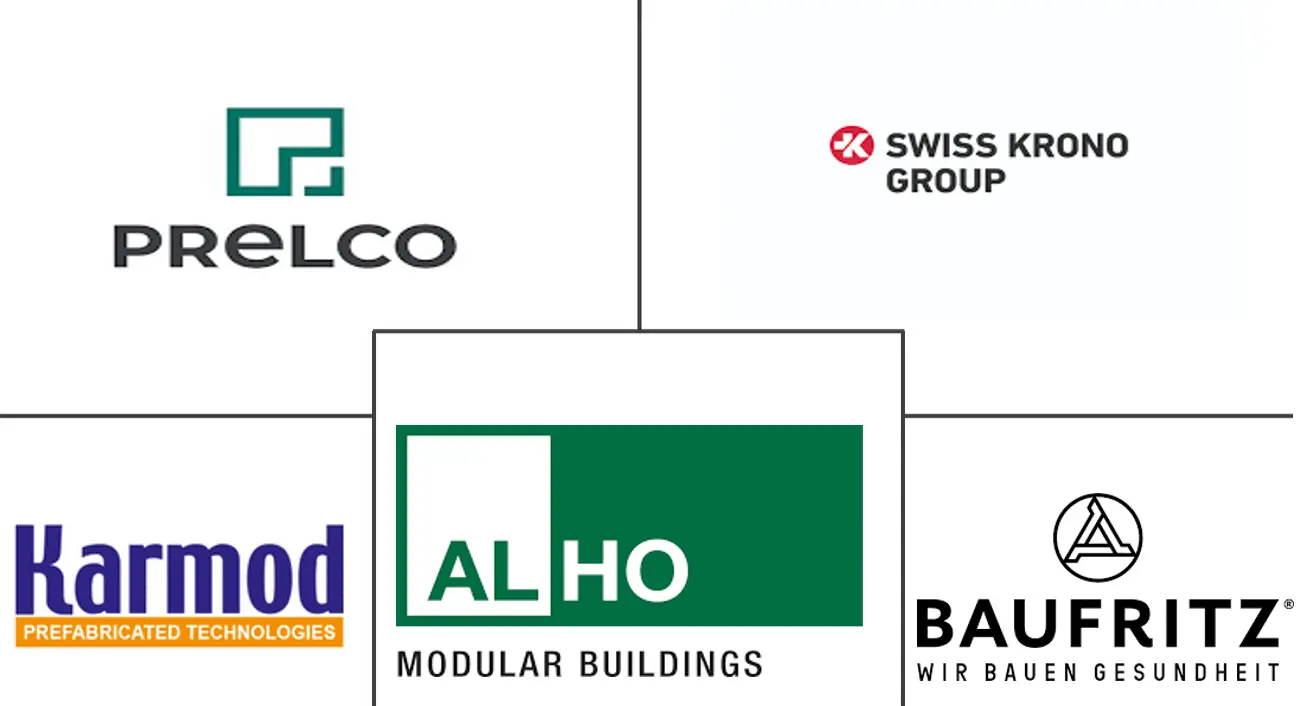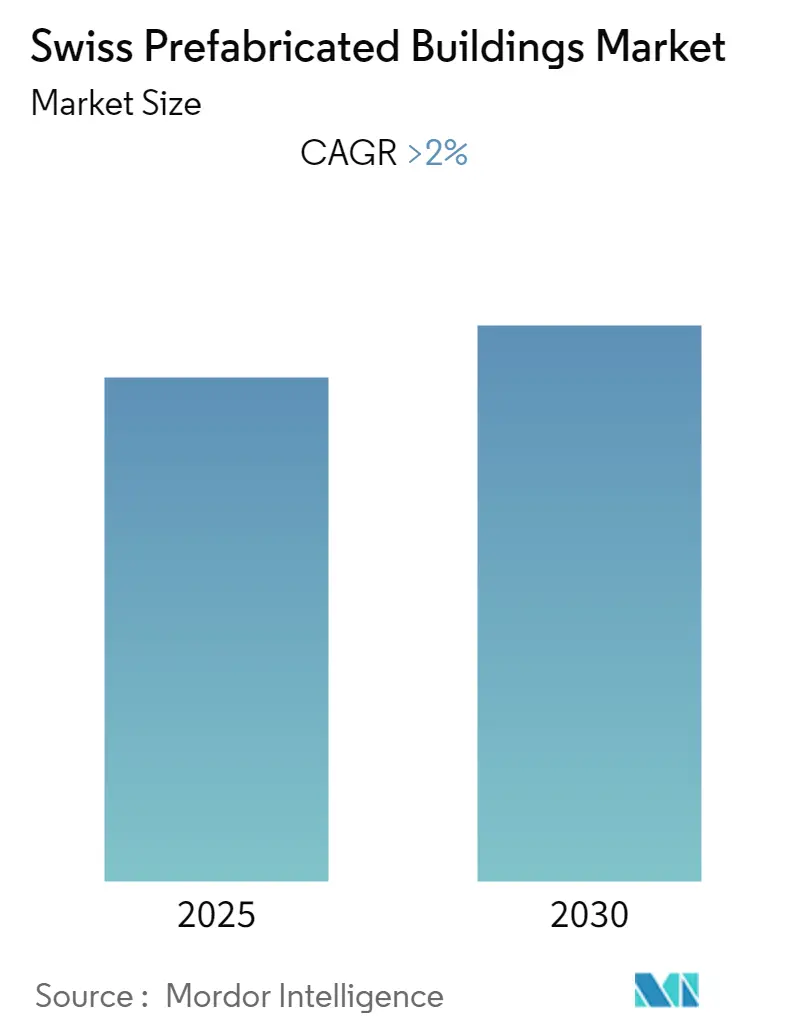
Swiss Prefabricated Buildings Market Analysis by Mordor Intelligence
The Swiss Prefabricated Buildings Market is expected to register a CAGR of greater than 2% during the forecast period.
The Swiss Prefabricated Buildings market was heavily impacted due to COVID-19, owing to lockdowns and a shortage of raw materials and labor. Besides, construction contracts had been stopped, which led to a decline in the prefabricated buildings market growth. Apart from disruptions of supply chains, termination of cost management contracts, and shortages of subcontractors and materials have also impacted market growth.
The prefabricated housing market is picking up across Switzerland as people increasingly focus on turnkey solutions that tick all the modern boxes. Acceptance of the manufacturing firms, as well as ease of planning and consent processes, are expected to further boost demand. Modular construction is gaining popularity across the country, owing to the population growth and shortages in housing.
In Switzerland, rising property prices are driving people to look for cheaper options. According to the Swiss residential property price index (IMPI), the cost of buying a house in Switzerland continued to rise in the third quarter of 2021, increasing by around 2.4% between July and September 2021.
According to data collected by the Federal Statistical Office (FSO), the price of both single-family houses and owner-occupied apartments rose significantly compared to the previous quarter; the price of single-family houses rose by 2.4% since Q2, while the price of owner-occupied apartments rose slightly less at 2.3%.
Swiss Prefabricated Buildings Market Trends and Insights
Urbanization and Growth of the Construction Industry
The increasing demand for affordable housing fueled by the rising population is expected to drive the market for prefabricated buildings in Switzerland. Prefab homes are the easiest way to build houses and other buildings. Systematically produced houses are a suitable solution for homeownership both individually and collectively. In Switzerland, traditional production is more difficult than in the rest of the world. Government policies that have been going on for many years have now become the culture of the country. Construction companies use pre-designed house types to keep planning costs low. Industrial methods are much more attractive than the construction process, which takes a long time on the site and has to comply with strictly controlled regulations. The easiest solution is to combine the parts produced in the factory in a modular manner at the production site and bring them ready to the construction site. However, in cases that do not comply with the regulation, the parts produced in the factory can be combined at the construction site as desired. In both options, action is taken according to customer requests.
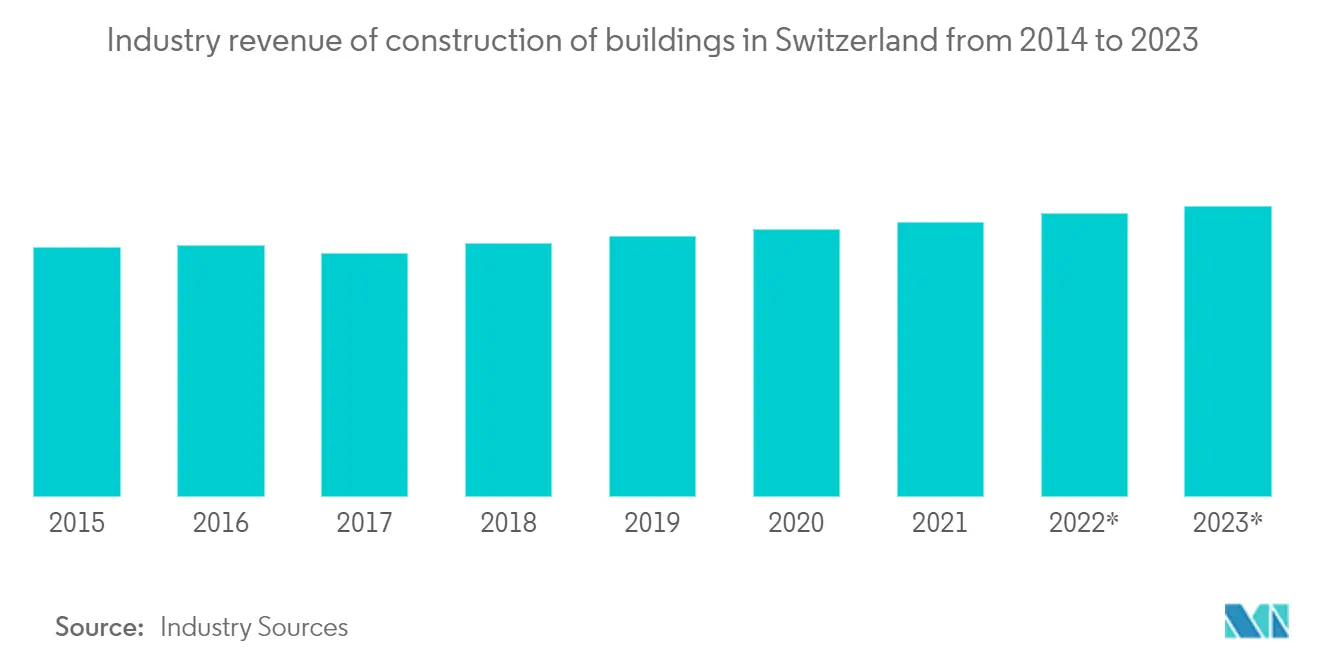
Demand from the Residential Sector
Switzerland is a small mountainous country with only a small amount of land available for housing. Spaces are smaller than in many other countries.
Most people rent unfurnished accommodation. Less than 40% of the population owns homes, less than this in cities. When looking to rent, bear in mind that prices are high and the market is tight, particularly in urban areas.
A balanced housing market generally has a vacancy rate between 1.5 and 3%, but most Swiss towns and cities have a vacancy rate of between 0.5% and 1.2%. This means that the Swiss housing market is tight and demand is higher than supply. This affects the price and the number of available properties.
Companies are using eco-friendly materials and manufacturing techniques to differentiate their offerings from their competitors. The focus on energy efficiency has led to the adoption of energy-absorbing materials such as micro homes. The advent of turnkey solutions is another major factor driving the market growth in the country.
With the increasing shift toward turnkey housing solutions, the prefabricated housing market expects to pick up across the country. Moreover, the ease of preparation and consent procedures are likely to boost the demand for prefabricated houses. The demand for prefabrication material in the renovation of residential houses is also expected to provide significant opportunities in the future.
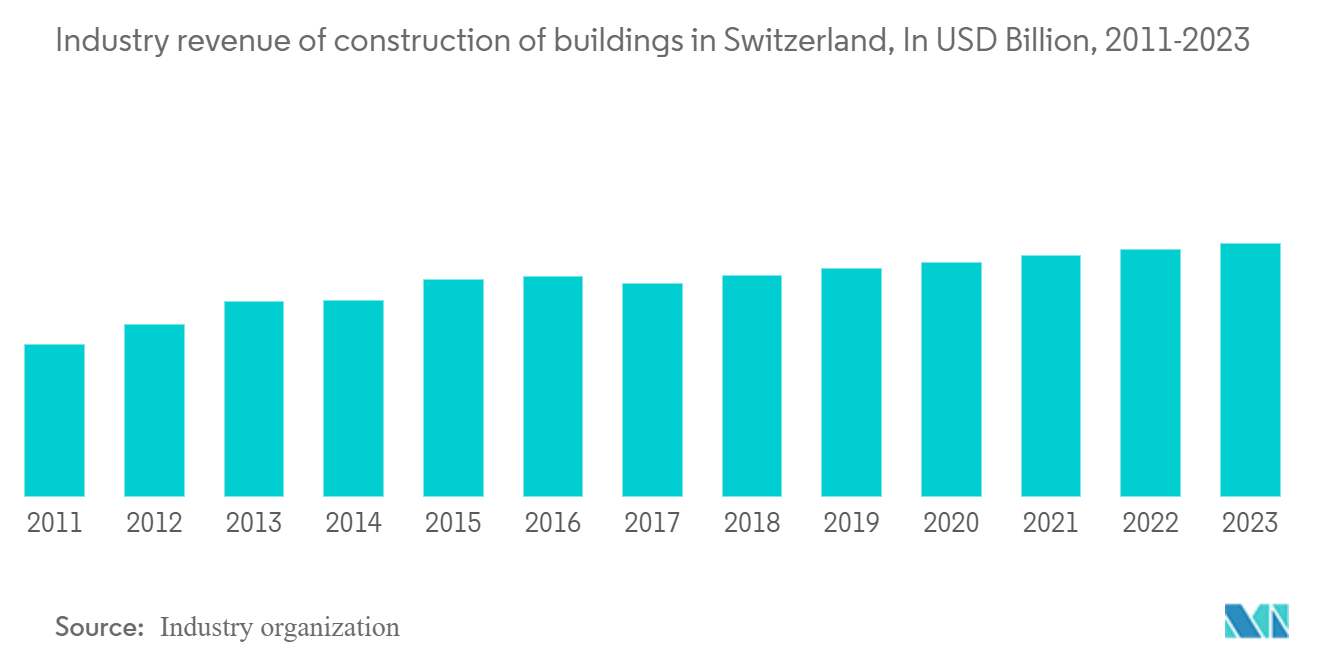
Competitive Landscape
The Swiss Prefabricated Building Market is fragmented, with the presence of both international and local players in the market. The market is expected to grow during the forecast period, owing to huge investments and funding being received by companies in the industry.
Some of the key players in the market include Swiss Krono, Baufritz, Holzbau AG, Prelco SA, ALHO, and Karmod.
Swiss Prefabricated Buildings Industry Leaders
-
Swiss Krono
-
Baufritz
-
Holzbau AG
-
Karmod
-
Prelco SA
-
ALHO
- *Disclaimer: Major Players sorted in no particular order
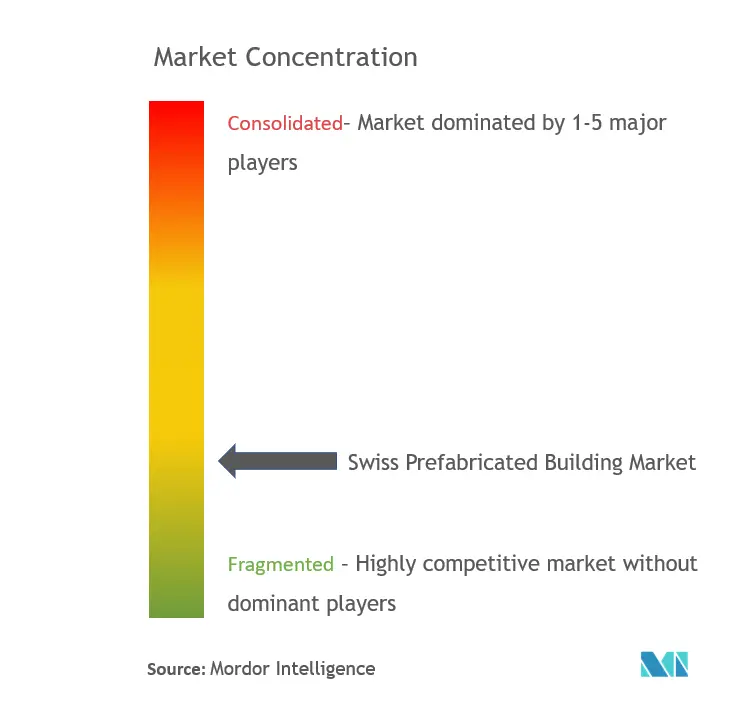
Recent Industry Developments
In October 2021, the latest addition to Empa and Eawag's NEST research building in Duebendorf, Switzerland, officially opened. The innovative HiLo unit illustrates nearly a decade of formative ETH Zurich research in architecture and sustainable technologies and features an intricate, doubly-curved concrete roof, lightweight funicular floors, and self-learning building technology. Combining medieval building principles with futuristic construction methods: the two-story building module was inspired by construction methods of the past and planned and built using state-of-the-art computational design and fabrication techniques. In the new unit, a team of scientists, together with industrial partners, explored how lightweight structures and efficient construction methods can be combined with intelligent and adaptive building systems to reduce both embodied and operational emissions in the construction and building industry.
In May 2021, ABB looked to tap into a skilled labor shortage in the fast-growing construction sector to help drive the post-pandemic recovery of its robotics business and diversification from the automotive industry. ABB is working on projects including using robots to install elevators for Switzerland's Schindler and automating the production of components for prefabricated modular homes.
Swiss Prefabricated Buildings Market Report Scope
Prefabricated buildings, or prefabs, are buildings with components (walls, roof, and floor) that are manufactured in a factory or manufacturing plant. These components can be fully or partially assembled in a factory, which is then transferred to the construction site. This method of building construction is preferred due to its cost efficiency, fast turnaround, and reusability. Common applications of prefabricated buildings are temporary construction facilities, office spaces, medical camps, evacuation centers, schools, apartment blocks, and single-detached houses. The Swiss Prefabricated Building is segmented into Material Type (Concrete, Glass, Metal, Timber, and Other Material Types) and Application (Residential, Commercial, and Other Applications (Industrial, Institutional, and Infrastructure)). The report offers market size and forecasts for the prefabricated buildings in Switzerland in values (USD Million) for all the above segments.
| Concrete |
| Glass |
| Metal |
| Timber |
| Other Material Types |
| Residential |
| Commercial |
| Other Applications (Industrial, Institutional, and Infrastructure) |
| Material Type | Concrete |
| Glass | |
| Metal | |
| Timber | |
| Other Material Types | |
| Application | Residential |
| Commercial | |
| Other Applications (Industrial, Institutional, and Infrastructure) |
Key Questions Answered in the Report
What is the current Swiss Prefabricated Buildings Market size?
The Swiss Prefabricated Buildings Market is projected to register a CAGR of greater than 2% during the forecast period (2025-2030)
Who are the key players in Swiss Prefabricated Buildings Market?
Swiss Krono, Baufritz, Holzbau AG, Karmod, Prelco SA and ALHO are the major companies operating in the Swiss Prefabricated Buildings Market.
What years does this Swiss Prefabricated Buildings Market cover?
The report covers the Swiss Prefabricated Buildings Market historical market size for years: 2020, 2021, 2022, 2023 and 2024. The report also forecasts the Swiss Prefabricated Buildings Market size for years: 2025, 2026, 2027, 2028, 2029 and 2030.
Page last updated on:
Swiss Prefabricated Buildings Market Report
Statistics for the 2025 Swiss Prefabricated Buildings market share, size and revenue growth rate, created by Mordor Intelligence™ Industry Reports. Swiss Prefabricated Buildings analysis includes a market forecast outlook for 2025 to 2030 and historical overview. Get a sample of this industry analysis as a free report PDF download.
